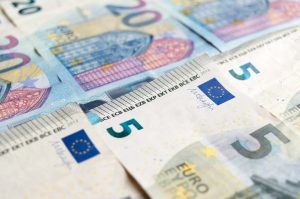Forex trading is a popular way to invest and earn money. However, it is important to understand all the fees that come with trading in order to make informed decisions. One of the fees that traders encounter in forex is the spread fee. In this article, we will discuss what the spread fee is and how it is calculated.
What is the spread fee?
The spread fee is the difference between the bid and ask price of a currency pair. The bid price is the price at which a trader can sell a currency, while the ask price is the price at which a trader can buy a currency. The spread fee is the cost of trading and is charged by the broker.
For example, if the bid price for EUR/USD is 1.2000 and the ask price is 1.2005, the spread fee is 0.0005 or 5 pips. This means that a trader would have to pay the broker 5 pips to enter a trade.
How is the spread fee calculated?
The spread fee is calculated in pips. A pip is the smallest unit of measurement in forex and stands for “percentage in point. It is used to measure the change in the exchange rate between two currencies. The value of a pip varies depending on the currency pair being traded and the size of the trade.
To calculate the spread fee, traders need to know the bid and ask price of the currency pair they are trading. The difference between the bid and ask price is the spread. For example, if the bid price for EUR/USD is 1.2000 and the ask price is 1.2005, the spread is 5 pips.
The spread fee is then calculated by multiplying the spread by the size of the trade. For example, if a trader wants to buy 10,000 EUR/USD at an ask price of 1.2005, the cost of the trade would be:
10,000 x 1.2005 = $12,005
If the spread is 5 pips, the spread fee would be:
0.0005 x 10,000 = $5
Therefore, the total cost of the trade would be $12,010 ($12,005 + $5).
Factors that affect the spread fee
The spread fee is not fixed and can vary depending on several factors. The main factor that affects the spread fee is market liquidity. Liquidity refers to the amount of trading activity in the market. If there are more buyers and sellers in the market, the spread will be tighter (i.e., the difference between the bid and ask price will be smaller). On the other hand, if there are fewer buyers and sellers, the spread will be wider (i.e., the difference between the bid and ask price will be larger).
Other factors that can affect the spread fee include the time of day, the currency pair being traded, and the broker’s pricing model. For example, some brokers offer fixed spreads, which means that the spread fee is always the same regardless of market conditions. Other brokers offer variable spreads, which means that the spread fee can change depending on market conditions.
Conclusion
The spread fee is an important cost to consider when trading forex. It is the difference between the bid and ask price of a currency pair and is charged by the broker. The spread fee is calculated in pips and can vary depending on market liquidity, the time of day, the currency pair being traded, and the broker’s pricing model. By understanding how the spread fee is calculated, traders can make informed decisions when entering trades and manage their risk effectively.






